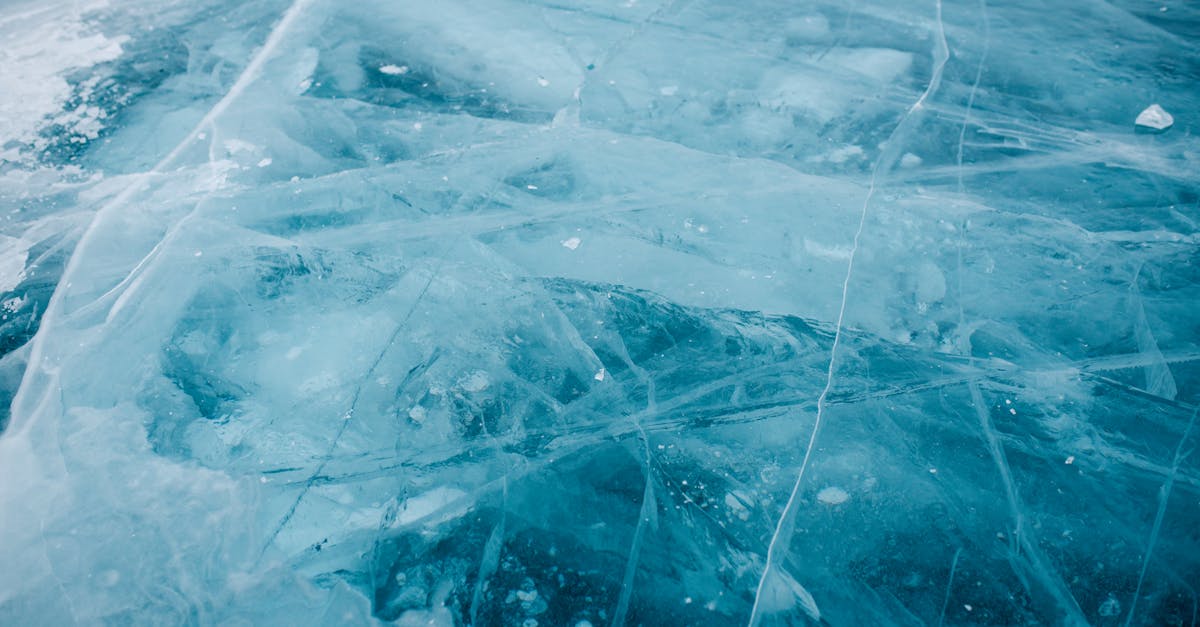- Ads (7)
- Adventure (60)
- Advertisment (36)
- Atv (22)
- Baby Boomer (20)
- Banking (16)
- Beauty (141)
- Budget (7)
- Bugs (49)
- Business (90)
- Cars & Motor Bikes (45)
- Childs (38)
- Cigar & Wine (21)
- Closet Organizers (25)
- Computer (3)
- Cooking & Food (6)
- Dating (140)
- Digital Marketing (132)
- Drug Addiction (20)
- E-commerce (1)
- Ebay (1)
- Entertainment (20)
- Facebook (75)
- Fashion (33)
- Finance (110)
- Fishing & Hunting (60)
- Fitness (94)
- Gambling (5)
- Gaming (76)
- Gardening (24)
- Golf Clubs (25)
- Google (1)
- Google Cloud Platform (1)
- Graphic Design (3)
- Harley-Davidson (25)
- Health (248)
- History & Heritage (5)
- Hobbits (15)
- House & Home (67)
- Instagram (11)
- Insurance (1)
- Internet and Networking (13)
- Lifestyle (135)
- Linkedin (11)
- Marketing (69)
- Money Making (15)
- Money Saving (4)
- Music (2)
- Nature (1)
- Niches (27)
- Parenting - Family (23)
- Parties (11)
- Pets - Animals (55)
- Photography (13)
- Phychology (13)
- Pinterest (2)
- Places (1)
- PLR - Print on Demand (1)
- Pocker (50)
- Podcast (25)
- Real Estate (1)
- Reddit (7)
- Science (12)
- Self Care (106)
- Self Help (32)
- Self Improvement (80)
- SEO - Web Traffic (54)
- Shopping & Gifts (1)
- Snapchat - TikTok (9)
- Social Media (19)
- Social Media Blogging (42)
- Social Media Marketing (59)
- Sports - Outdoors (39)
- Spring (2)
- Stress (19)
- Summer (33)
- Swimming (10)
- Termite (20)
- Toys (20)
- Travel (62)
- Tumbler (19)
- Twitter (62)
- Video Marketing (2)
- Weather (24)
- Web Designing (10)
- Weddings (34)
- Weight Loss (25)
- Wildlife (30)
- Women (12)
- Wood Working (10)
- Writing - Self Publishing (3)
- YouTube - Vlog (3)
What to Do When Severe Weather Strikes
When severe weather strikes, it's essential to act promptly and effectively to ensure safety. For hurricanes, evacuate as early as possible to avoid traffic and gas shortages, particularly if you live in a flood-prone or coastal area. For tornadoes, have a preplanned safe room—an interior, windowless space—and keep padding like cushions or blankets nearby to protect against debris. During floods, move to higher ground immediately and avoid risking your safety to protect property. Stay informed by following weather forecasts and alerts from meteorologists, as they often provide advance warnings that can be critical for your preparedness and safety.
Read MoreWeather How and Why You Should Prepare for Tornado Season
If you live in an area prone to tornadoes, preparing for tornado season is crucial. First, understand your risk, especially if you live in "Tornado Alley," and prepare for the possibility of tornadoes during spring, summer, and fall. Develop a family plan, designating a safe room, such as a basement or an interior room without windows, and ensure all family members know this plan. Gather essential supplies like water, non-perishable snacks, a weather radio, and flashlights, storing them in your designated safe area. Weather radios, available at sports stores, department stores, and online, are particularly important for receiving alerts during severe weather. Lastly, stay vigilant and keep updated on weather conditions, as tornadoes can develop quickly from thunderstorms.
Read MoreWeather Devices: Where to Find and Buy Them
If you're interested in tracking the weather from home, you have various options for purchasing weather devices. Traditional thermometers can be found at department stores, discount stores, and even dollar stores, while more advanced digital weather forecasters are available at sports, department, and home and garden stores. Weather vanes, useful for both tracking and decoration, can be bought at home and garden stores, department stores, and sports stores. Rain gauges and snow gauges, ranging from inexpensive to more scientific models, are also available at similar stores. For the best selection and prices, consider shopping online where you can compare options and find full weather station sets at competitive rates.
Read MoreWeather and Global Warming
Global warming, the gradual increase in Earth's temperature due to greenhouse gases, is a widely debated issue with significant implications for weather patterns. While commonly associated with rising temperatures, it also causes weather instability, leading to both extreme heat and cold, droughts, and record flooding in different regions. To understand these effects, you can search online for research reports and meteorological studies, or watch TV programs and documentaries like Al Gore's An Inconvenient Truth. Although the most profound impacts may emerge in the future, current signs include erratic temperatures and intensified weather events.
Read MoreWays to Check Your Local Weather
There are several effective ways to check your local weather, each with its own advantages. Local news programs offer weather updates during broadcasts, though they may not be available on demand. The internet provides a range of options, including websites of local and national news stations, like The Weather Channel, which offer real-time updates and radar images. Downloadable weather programs for your computer and weather apps for your cell phone offer convenient access, with some sending alerts for severe weather. Each method ensures you stay informed about your local weather and any potential changes.
Read MoreThe Importance of Owning a Weather Radio
Owning a weather radio can be a vital tool for staying informed about severe weather. If you live in an area prone to events like tornadoes or flash floods, having a weather radio is especially important due to its ability to provide timely alerts when traditional media may not be available. Weather radios are available in various formats, including battery-operated and hand-crank models with additional features like AM/FM tuners or built-in flashlights. These radios can often be found both locally and online. Understanding how to use your weather radio effectively—keeping it on during severe weather conditions and ensuring it's operational—can help ensure your safety and preparedness during emergencies.
Read MoreShould You Get a Degree in Meteorology?
If you're considering a degree in meteorology, it offers numerous benefits, including diverse career opportunities. Meteorology programs are widely available at many colleges and universities across the U.S. When deciding if this path is right for you, assess your interest in weather and your career goals. If you are passionate about weather and envision a career in meteorology—whether as a teacher, writer, or meteorologist—this degree could be a great fit. Research programs, consider internships, and think about how a degree in meteorology aligns with your long-term goals before making your decision.
Read MoreShould You Become a Storm Chaser?
If you have a passion for weather and find yourself intrigued by severe storms, storm chasing might be appealing. However, it requires more than just enthusiasm; storm chasers need a deep understanding of weather patterns, the ability to interpret radar images, and quick problem-solving skills under pressure. This activity isn't just a thrilling pursuit but involves significant risks, making safety and preparation paramount. Essential tools like weather radios and up-to-date radar access are crucial, and having a team can enhance both safety and success. Whether as a hobby or career, storm chasing demands careful consideration and caution.
Read MoreNeat At-Home Weather Tracking Tools
If you're passionate about tracking the weather, you'll find a variety of at-home weather tools to enhance your experience. Start with a thermometer, available in both traditional and digital formats, to monitor indoor and outdoor temperatures. For wind tracking, consider a weather vane to determine wind direction and an anemometer for wind speed and pressure. Sunshine recorders are essential for measuring sunlight, especially useful for those in agriculture. Lightning detectors, including portable options, offer safety during outdoor activities, while rain gauges measure rainfall accurately. If you live in a snowy region, snow gauges are a must. Additionally, full weather stations combine many of these tools, offering a comprehensive and often more affordable solution for weather enthusiasts.
Read MoreHow to Find Weather Related Jobs and Careers
If you're seeking a career in meteorology or another weather-related field, there are several methods to explore job opportunities. Start by checking your local newspaper's classified ads, especially if you're near a large city with radio and TV stations that often hire meteorologists. The internet is a valuable resource too, where job-search websites can help you find openings nationwide, with options to search by location. Visiting the websites of local radio and TV stations may reveal job listings directly, and listening to news broadcasts focused on careers could provide leads. Additionally, submitting your resume to companies that employ meteorologists, like news stations, might open doors when positions become available.
Read MoreHow and Why You Should Prepare for Hurricane Season
If you live in a hurricane-prone area, especially along the East or Gulf Coasts, it's crucial to prepare before hurricane season starts in June. Preplanning includes creating an evacuation plan, deciding what essential items to take, and ensuring you have a safe place to go, whether it's with friends, family, or a hotel. As soon as a hurricane watch is issued, stock up on supplies and secure your home. If you choose to stay despite evacuation warnings, ensure your home is safe, and have food, water, and communication tools ready. Preparation is key to handling the unexpected during hurricane season.
Read MoreCareers in Weather You May Find Appealing
If you're interested in weather and considering a career change, there are numerous weather-related fields to explore. Meteorology is a popular choice, with opportunities in broadcasting and behind-the-scenes roles, but teaching weather, either to amateurs or professionally in schools and colleges, is also an option. Additionally, you could become a weather writer, contributing to newspapers, magazines, or even running your own weather-focused website. Each path requires specific education and skills, but there are many opportunities to turn a passion for weather into a fulfilling career.
Read MoreWeight Loss Medicine
When considering weight loss medicine, it's crucial to consult your doctor to ensure safety and effectiveness. Alli is an over-the-counter option, a milder version of prescription Orlistat, which blocks fat absorption and may cause digestive issues like oily discharge and diarrhea, especially if your diet is high in fat. Prescription medications like Meridia and Xenical are FDA-approved but can be expensive, with potential side effects including elevated blood pressure, headaches, and constipation. Always discuss these options with your doctor to select the most suitable and safe medication for your needs.
Read MoreWeight Loss Medications
For weight loss medications, consult your doctor to find a suitable option. Alli (orlistat) and Xenical are fat blockers, with Xenical being a stronger prescription version that can cause digestive issues and nutrient deficiencies. Meridia affects appetite regulation but may increase blood pressure and cause restlessness. Adipex-P and Sanorex are for severe obesity but are addictive and can lead to serious side effects, requiring strict medical supervision. Always combine medication with a balanced diet and exercise for effective results.
Read MoreWeight Loss Calculator
Before starting a weight loss plan, it’s important to use a weight loss calculator to ensure you're burning more calories than you consume. Begin by calculating your daily calorie needs based on your height, weight, and activity level; typically, aiming for 1200 to 1500 calories per day is effective for weight loss. To shed pounds, consume about 500 calories less than this amount. Track the calories in each food serving, using resources like calorie books or online tools, and avoid high-calorie, processed carbs. Ensure fats constitute no more than 30% of your daily intake, with carbs and proteins making up 50% and 20%, respectively. Record your intake carefully, using a notebook or a mobile app for convenience.
Read MoreWays To Loose Weight
There are many ways to lose weight, but avoiding fad diets is crucial as they are often unsustainable and lead to weight regain. Effective weight loss requires active participation through regular exercise and healthier eating. Start with small changes, such as eating five or six small meals a day with lean protein and greens, and avoid processed carbs initially. Simple carbs, like those made with white flour and sugar, should be limited as they convert to fat if not burned off. Additionally, drinking plenty of water helps cleanse the body and aids in weight loss.
Read MoreThe Fat Smash Diet
The Fat Smash Diet, created by Ian Smith, is a 90-day program that combines healthy eating and exercise. It begins with a detox phase of fruits and vegetables, with potential symptoms like nausea or tiredness. The plan progresses through four stages, gradually adding lean meats, carbs, and some fast foods, while promoting small, frequent meals to boost metabolism. Following both the diet and exercise components is crucial for effective weight loss, and it may be a viable option if adhered to diligently.
Read MoreStomach Fat Burning-Diets Are Everywhere
Stomach fat burning diets are abundant, but it’s crucial to assess their safety and effectiveness. Fad diets, like the grapefruit diet, may offer short-term results but often lead to weight regain when old eating habits return. For significant weight loss, adopt lifestyle changes rather than relying on temporary diets. Track your food intake with a journal to understand caloric, fat, carb, and sodium content. Calculate your daily caloric needs and plan balanced meals. Pack healthy snacks and lunches to avoid unhealthy workday eating. Drink plenty of water and consider supplements if the diet is restrictive to ensure you get necessary nutrients.
Read MoreReduce Belly Fat In Women
To effectively reduce belly fat in women, opt for a balanced approach involving healthy eating and regular exercise. Choose weight loss plans that promise no more than two pounds per week, as faster rates can be unhealthy and unsustainable. Your meal plan should include five small, flavorful meals daily to keep metabolism active. Learn to cook healthy meals and practice portion control to maintain weight loss long-term. Focus on a diet with less than 30% fat and carbohydrates, and consider supplements to ensure you get necessary nutrients. This combination helps manage weight and reduces cravings for unhealthy foods.
Read MoreRapid Weight Gain
If you need to gain weight rapidly for a sport while maintaining good shape, focus on consuming more calories than you burn. Develop a balanced plan for both nutrition and exercise, including lean proteins, good fats, and complex carbs. Calculate your daily calorie needs and adjust your meals accordingly, possibly reaching high calorie levels like those of elite athletes such as Michael Phelps. Incorporate balanced meals with lean meats, whole grains, fruits, and vegetables, and seek advice from a coach or nutritionist to tailor your plan effectively. This approach ensures muscle gain without excessive fat accumulation.
Read MoreLoss Stomach Fat- One Of The Most Stubborn Places To Lose
Stomach fat is often the most stubborn to lose due to its accumulation in the largest area of the body. While stomach fat is lost at the same rate as body fat overall, it can be slow to diminish because of its volume. Consistent healthy eating and daily exercise, including varied activities like walking, swimming, or tennis, can help accelerate fat loss. Incorporate strength training to build lean muscle, which boosts metabolism and burns fat more effectively. Eating five to six small meals daily, focusing on lean proteins and limiting unhealthy fats, will support steady weight loss and help reduce stomach fat over time.
Read MoreLose The Stomach Fat-Everyone Has Trouble Spots
Losing stomach fat requires a comprehensive approach since spot reduction isn’t effective. Focus on overall body weight loss through a balanced diet and reduced calorie intake, as fat loss occurs throughout the body. Incorporate exercises targeting major muscle groups to enhance overall toning, which helps in appearing slimmer. Hydrate well and maintain a healthy diet, emphasizing whole foods and regular exercise. Simple exercises like crunches can specifically target the abdominal area, but remember, effective weight loss involves reducing fat everywhere, not just in one spot.
Read MoreLose Belly Fat- Lose It All Over
To lose belly fat effectively, focus on overall weight loss since you can't target fat loss in just one area. Incorporate regular exercise, starting with easy walks and gradually increasing intensity. Walking, whether on land or in water to reduce joint strain, can be a powerful tool for weight loss. Complement your exercise routine with a healthy diet to see results. Remember, weight loss is a gradual process, and consistency is key. Avoid shortcuts and focus on long-term changes to achieve and maintain a healthier body.
Read MoreLose Abdominal Fat
To effectively lose abdominal fat, start by changing your mindset and committing to a healthier lifestyle. Avoid bad carbs and processed foods; instead, focus on eating fresh fruits, vegetables, and lean proteins like fish, eggs, and chicken. Limit your daily calorie intake to around 1200-1500 calories. Reset your body's insulin levels by avoiding sugary foods and drinks, as excess insulin promotes fat storage around your midsection. Hydrate well with water, and consider infusing it with frozen fruit for flavor without added sugar. Consistency and dedication to these changes will help you achieve your goal of losing abdominal fat.
Read MoreLoose Belly-Are You A Pillsbury Doe Boy Look Alike
Loose belly skin, often resulting from pregnancy or significant weight loss, can be managed with several approaches. Start with a daily exercise routine focusing on core exercises like crunches and lunges to tone your muscles, complemented by cardio. Adjust your diet to be low-fat, low-carb, and high-protein, and avoid sugary snacks and drinks. Stay hydrated by drinking half your body weight in ounces of water daily to maintain skin elasticity. Consider over-the-counter skin tightening creams for added support. If these methods don’t work, consult a physician about surgical options like a tummy tuck, which involves risks and recovery time.
Read More























